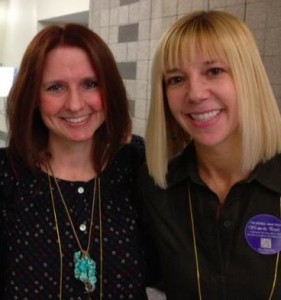As I have been reading Judi and Sue’s posts I have been reminded of the students in my class and our class chats over the past couple of weeks. I am teaching a class on collaboration and instructional design to an eager group of future school librarians this semester. Our early discussions have focused on: What is collaboration? Why collaboration? What does it look like now? Where do we see it going? It has been very interesting to see the parallels between the blog posts and the perspectives of my students. I believe we can learn a great deal by considering these different perspectives.
After reading many articles on what collaboration is, as defined in the sense of the school librarian, and examining definitions from a variety of professionals in our field, from Montiel-Overall (2005), to Wallace and Husid (2011), and Empowering Learners (AASL, 2009), my students came to class with more questions than answers. Their questions led to rich and thought-provoking discussions!
First I was amazed at how many of them had no idea about the concept of collaboration, and how we as school librarians fit into the instructional process through co-planning, co-teaching, and co-assessing teaching and learning. This was so surprising to me because for the most part they have all been teachers before coming into the program. It yet again makes me painfully aware of the lack of awareness for the school librarian’s role as a teacher and as an instructional partner by teachers. Yet, collaboration is one of those concepts that as we become practicing school librarians we understand what is meant when we say “I collaborate with teachers.” I think all too often we forget that others around us share this same perspective as the students in my class and really have no idea what we are talking about when we say this.
In her post Judi mentions the research from Todd, Gordon, and Lu (2011) that says “in collaborative culture schools the instructional partner role of the school librarian is highly respected and prized by administrators and fellow educators because of the school librarian’s positive impact on student learning outcomes and “cost-effective, hands-on professional development [for educators] through the cooperative design of learning experiences that integrate information and technology” (Todd, Gordon, & Lu, 2012, p. 26).
But as my students pointed out, this is not the case in most of the schools where they currently work. So their question to me was what do you do when you find yourself in a school that doesn’t operate this way and does not recognize the value and the benefit of the school librarian as an instructional partner and teacher? Which is similar to what Judi asks at the end of her post on the article from Scholastic Administrator.
In our discussions we came to the consensus that first step towards collaboration is education. So I pose the question: How can you, as the school librarian, educate teachers, administrators, students, and other stakeholders on what your role is in regards to being an instructional partner and a teacher?
References
American Association of School Librarians (AASL). (2009). Empowering learners: Guidelines for school library media programs. Chicago, IL: American Library Association
Montiel-Overall, P. (2005). Towards a theory of collaboration for teachers and librarians. School Library Media Research, 8. Retrieved from http://www.ala.org/aasl/aaslpubsandjournals/slmrb/slmrcontents/volume82005/theory
Todd, R. J., Gordon, C. A., & Lu, Y. (2011). One common goal: Student learning. Report of findings and recommendations of the New Jersey library survey, phase 2. New Brunswick, NJ: Rutgers Center for International Scholarship in School Libraries. Retrieved from http://cissl.rutgers.edu/images/stories/docs/njasl_phase%20_2_final.pdf
Wallace, V., & Husid, W. (2011). Collaborating for inquiry-base learning: School librarians and teachers partner for student achievement. Santa Barbara, CA: Libraries

